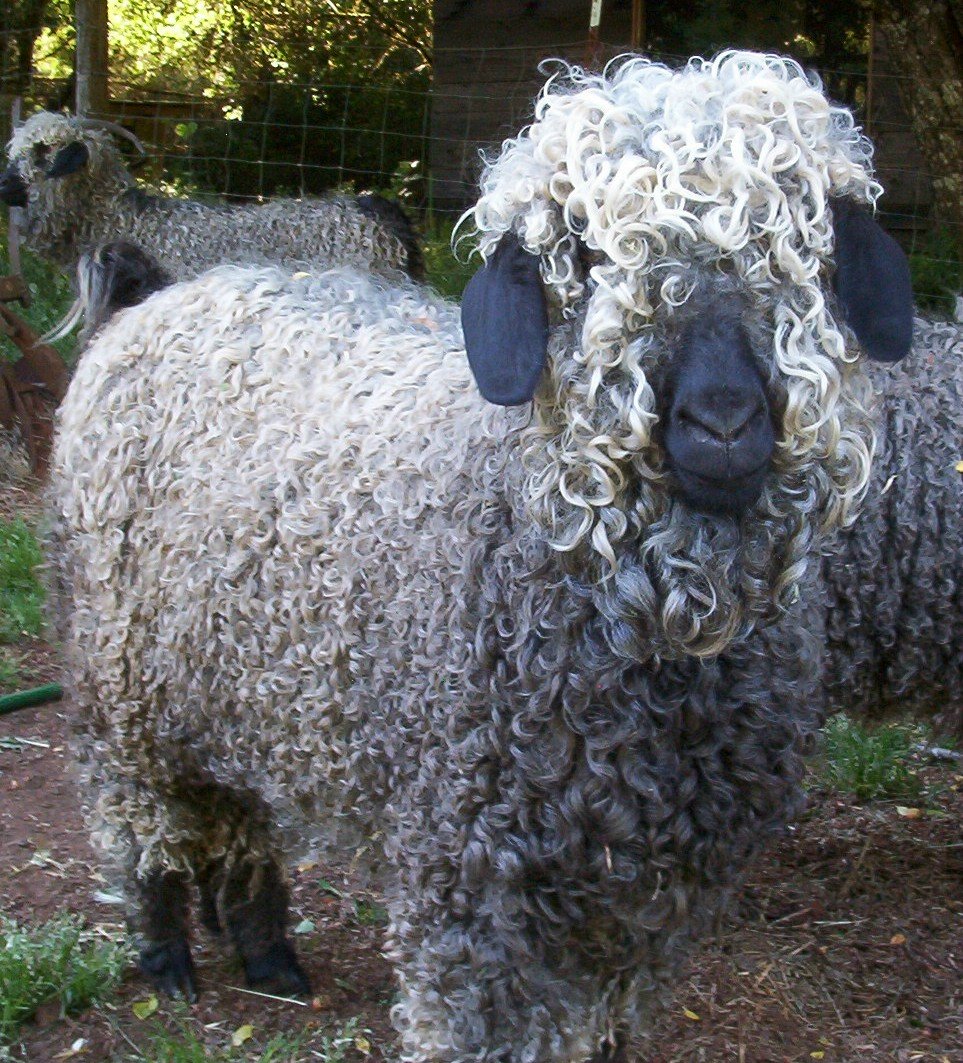In my first post I covered the very basic principles of food security using the definition put forth by the World Health Organization Alternatively, the Food and Agricultural Organization of the United Nations has four pillar model, an example of which may be found in
this report (link opens a PDF).
 |
| Image Source. This is an angora goat. They are highly prized for their wool. |
So how does any of this relate to animals? It may seem obvious that animals are involved in agriculture. We drink milk and eat eggs and we cook with them. And many people, unless they are vegetarians, also eat meat of some sort on a regular basis. In many parts of the world, food products from animals provide a significant source of dietary protein and essential nutrients such as B-12 and niacin.
 |
| Image Source. Animals are still used to plow fields in some parts of the world. |
Animals also provide goods and services to people. You can use the fur of an animal to make wool, the skin to make leather, and parts of the animals not used for food can be used to make other items such as soap. Animals also can provide services such as pulling carts, plows or mills, for transportation, or they may guard a herd of other animals. They may also provide companionship and assistance to those in need.
Animals are also a source of livelihood to many. Eggs, milk, and wool may be sold to bring money in to a family. Animals can be bred to replenish a herd or to sell. Meat can be eaten or sold.
Whether animals are a source of food, fiber, or livelihood, animal health plays a role in human health. The humans that depend on animals depend on those animals to be healthy and productive, therefore anything that negatively affects those animals, such as disease or natural disaster, will also have a negative affect on those humans and their livelihoods. A loss of those animals can mean a loss of someone's source of protein and their income.
Diseases that affect animals cost on the order of billions of dollars each year. This means billions of dollars involved in the treatment of animals, of lost product, replacement product, and human hours to clean up the losses, to replace them, and to resume the business involved in bringing the animal products to the store.
In order to address diseases that affect animals, and that also impact human health, doctors and veterinarians take on a
One Health approach to diseases. The concept of One Health incorporates, human, animal, and environmental health into an all-encompassing sphere of influence: animal health is affected by environmental health; animal health affects human health; human activities influence animal and environmental health; and so on. By working together, veterinarians, epidemiologists, animal health professionals, medical doctors, nurses, and ecologists can cooperatively solve problems affecting all of the One Health sphere. To find out how the US Centers for Disease Control and Prevention are working with groups around the US, check out their
One Health page.


